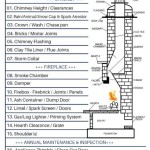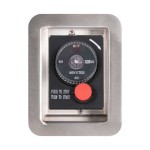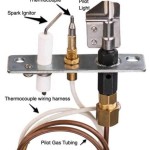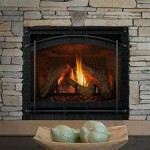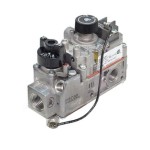River Rocks Fireplace: A Natural Aesthetic for the Modern Home
A river rocks fireplace offers a unique and visually appealing alternative to traditional fireplace designs. Utilizing the natural beauty of polished stones, these fireplaces integrate organic textures and earthy tones, creating a focal point that complements a variety of interior design styles. From rustic cabins to contemporary urban dwellings, a river rocks fireplace can transform a space, adding warmth, character, and a touch of the outdoors.
The construction and design of a river rocks fireplace can vary significantly, depending on the desired aesthetic and the existing structural elements of the home. Understanding the key aspects of these fireplaces, from material selection to installation considerations, is crucial for achieving a successful and enduring result.
Material Selection for River Rocks Fireplaces
The defining characteristic of a river rocks fireplace is the use of natural stones. The selection of these stones is paramount, influencing both the visual appeal and the structural integrity of the fireplace. Several factors must be considered when choosing the appropriate river rocks:
Stone Type and Color: River rocks are available in a wide range of colors, shapes, and sizes. Common stone types include granite, quartzite, and slate, each offering a distinct visual texture. The color palette can range from neutral tans and grays to vibrant reds, greens, and blues. Selecting a color scheme that complements the existing décor is essential for creating a cohesive design. It is also important to consider the overall pattern and variation of colors within the rocks. Uniformity can create a more streamlined look, while variation enhances the natural aesthetic.
Stone Size and Shape: The size and shape of the river rocks significantly impact the overall appearance of the fireplace. Larger, more irregularly shaped stones create a bolder, more rustic feel, while smaller, smoother stones tend to result in a more refined and contemporary look. The specific dimensions of the fireplace and the desired design aesthetic should guide the selection process. For example, a small fireplace might be overwhelmed by excessively large stones, while a large fireplace might require larger stones to create sufficient visual impact.
Stone Quality and Durability: The quality and durability of the river rocks are crucial for ensuring the longevity and safety of the fireplace. Stones should be free from cracks, chips, and other imperfections that could compromise their structural integrity. They should also be resistant to heat and moisture, as fireplaces are subject to significant temperature fluctuations. Selecting stones from reputable suppliers can help ensure that they meet the necessary quality standards. Consider the porosity of the stone as well, as more porous stones might be more susceptible to staining or damage over time.
Mortar Considerations: The mortar used to secure the river rocks is just as important as the stones themselves. It should be a high-quality, heat-resistant mortar specifically designed for fireplace construction. The color of the mortar can also impact the overall aesthetic. Darker mortar tends to accentuate the natural colors and textures of the stones, while lighter mortar can create a more subtle and blended look. The choice of mortar color should be carefully considered to achieve the desired visual effect. It's vital that the mortar is applied correctly to ensure a strong and durable bond between the stones.
Stone Sourcing: Sourcing the river rocks from sustainable and ethical sources is increasingly important. Consider purchasing stones from suppliers who adhere to environmentally responsible practices and ensure that the stones are harvested without harming the surrounding ecosystems. This may involve researching the supplier's extraction methods and certifications.
Design and Construction Considerations
Designing and constructing a river rocks fireplace involves careful planning and execution. Several key considerations must be addressed to ensure a safe, functional, and aesthetically pleasing result.
Structural Integrity: The fireplace structure must be able to support the weight of the river rocks. This is especially important for larger fireplaces that utilize substantial quantities of stone. A professional structural engineer should be consulted to assess the load-bearing capacity of the existing structure and to ensure that the fireplace design is structurally sound. Reinforcements may be necessary to provide adequate support for the added weight of the stones. The foundation is particularly important, guaranteeing it is level and capable of handling the increased mass.
Fire Safety: Fire safety is paramount when constructing a fireplace. The design must comply with all applicable building codes and regulations. This includes ensuring proper clearances between the fireplace and combustible materials, such as wood framing and drywall. A non-combustible hearth extension is required to protect the flooring from sparks and embers. Furthermore, the chimney or flue must be properly sized and constructed to ensure efficient venting of smoke and gases. Regular inspections and maintenance are crucial for maintaining fire safety over the long term.
Firebox Design: The firebox is the heart of the fireplace, and its design is critical for efficient combustion and heat distribution. The firebox should be constructed of heat-resistant materials, such as firebrick or cast iron. The size and shape of the firebox should be appropriate for the size of the room and the desired heating capacity. A well-designed firebox will promote efficient airflow and minimize the production of smoke and creosote. Consider the type fuel being used (wood, gas, etc.) when designing the firebox as this will affect the design specifications.
Installation Techniques: The installation of the river rocks requires specialized skills and techniques. The stones must be carefully arranged and mortared in place to create a visually appealing and structurally sound surface. The mortar joints should be consistent and evenly spaced. A skilled mason can create a variety of patterns and textures by varying the size, shape, and orientation of the stones. It's important to work in manageable sections to allow the mortar to cure properly. Cleanliness during the installation process is also essential to prevent mortar stains from marring the appearance of the stones.
Ventilation and Airflow: Proper ventilation is essential for efficient combustion and to prevent smoke from entering the room. The fireplace should be equipped with a functional damper that can be opened and closed to control airflow. An outside air intake can also improve ventilation by providing a source of fresh air for combustion. This is particularly important in tightly sealed homes. Regularly inspecting and cleaning the chimney or flue is necessary to ensure proper venting and prevent the buildup of creosote.
Aesthetic Considerations for River Rocks Fireplaces
Beyond the structural and functional aspects, the aesthetic design of a river rocks fireplace plays a crucial role in its overall impact. Integrating the fireplace seamlessly into the surrounding environment requires careful consideration of various design elements.
Style and Integration: A river rocks fireplace can be adapted to a variety of architectural styles, from rustic and traditional to modern and contemporary. The key is to select stones and design elements that complement the existing décor. In a rustic setting, larger, more irregularly shaped stones can create a natural and rugged feel. In a modern setting, smaller, smoother stones arranged in a clean and linear pattern can create a more refined and contemporary look. The surrounding materials, such as wood, metal, and glass, should also be carefully chosen to enhance the overall aesthetic. Consider the color palette of the room and how the fireplace will integrate with existing furniture and artwork.
Lighting and Ambience: Lighting can dramatically enhance the visual appeal of a river rocks fireplace. Uplighting can accentuate the textures and colors of the stones, while downlighting can create a warm and inviting ambiance. Consider using recessed lighting, spotlights, or sconces to highlight the fireplace. The type of lighting fixture, such as LED or halogen, can also impact the overall effect. The color temperature of the light should be carefully chosen to complement the colors of the stones. Natural daylight can also enhance the beauty of the fireplace, so consider the location of windows and skylights.
Hearth Design: The hearth is an integral part of the fireplace design. It should be both functional and aesthetically pleasing. The hearth can be constructed of a variety of materials, such as stone, brick, tile, or concrete. The size and shape of the hearth should be proportional to the size of the fireplace. A larger hearth can provide additional seating or display space. The color and texture of the hearth material should complement the river rocks. Consider the overall style of the room when selecting the hearth material.
Mantel Options: While not always necessary, a mantel can add a touch of elegance and functionality to a river rocks fireplace. The mantel can be constructed of wood, stone, or metal. The style of the mantel should complement the overall design of the fireplace. A rustic wood mantel can enhance the natural feel of the river rocks, while a sleek metal mantel can create a more modern look. The mantel can be used to display artwork, photographs, or other decorative items. Ensure that the mantel is installed at a safe distance from the firebox to prevent it from catching fire.
Surrounding Décor: The surrounding décor can further enhance the visual appeal of a river rocks fireplace. Consider adding natural elements, such as plants, flowers, or wood accents, to create a cohesive and harmonious look. The colors and textures of the surrounding décor should complement the colors and textures of the river rocks. Avoid cluttering the space around the fireplace, as this can detract from its visual impact. A well-designed river rocks fireplace can serve as a stunning focal point in any room, adding warmth, character, and a touch of the outdoors.

River Stone Fireplace Detail For Rock Home Ideas Fireplaces Designs

River Rock Fireplaces

River Stone Fireplaces Rock Fireplace Design

River Rock Fireplace Insteading

Standout River Rock Fireplaces Cottage Cuties

Designing Luxurious Stone Fireplaces With A Treasure River Rock Selexstone Selex

River Rock Fireplace Photos Ideas Houzz

60 River Rock Stone Molds Make 1000s Fireplace Wall Veneer Free

Standout River Rock Fireplace Designs All Time Favorites

How To German Smear A Dated River Rock Fireplace Krista Gilbert Fireplaces Stone Decor



